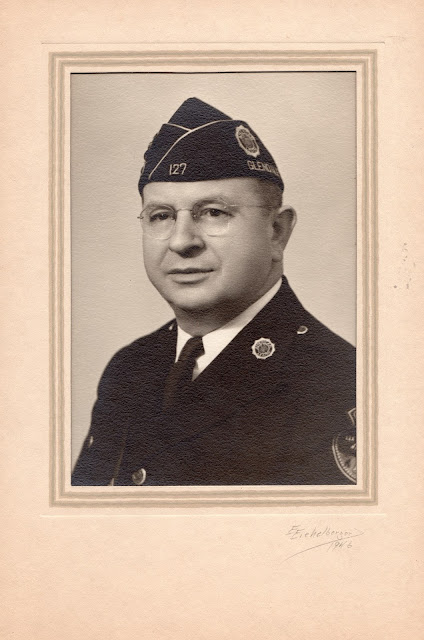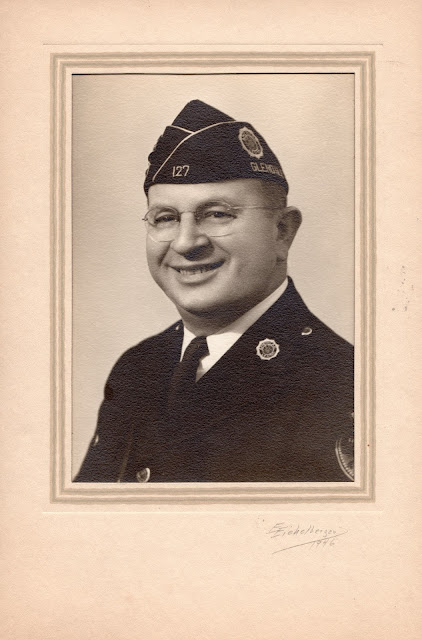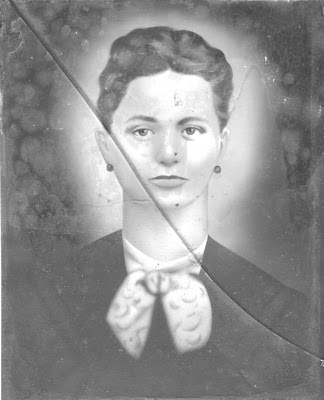The Nevis family came to the United States from the Azores. Like most of his brothers and sisters, Jacinto Neves took his family first to Boston, Massachusetts, then to the Central Valley of California. They were all born on Pico Island, an isle dominated by the seismically active volcano Ponta do Pico, in Candelaria on the southwest of the island, though his wife Mariana Enos de Brum hailed from the southeastern Lajes do Pico or its vicinity, perhaps Upper Almagreira according to a 1993 manuscript by Adrienne Alston; Mariana's brothers and sisters also immigrated to California.
 |
| My map of Nevis ancestors by date and location of birth; interactive source is here. Light blue indicates before 1500; dark blue between 1500 and 1900. |
Jacinto's family came to the Azores largely from northern Portugal. Mariana's family can be traced back to Flemish settlers who arrived in the Azores in the 1480s as well as to the settlers from the Portuguese mainland. I once put together a map of researched ancestors, based on the date and location of birth though I have less confidence in that family lineage the further back in time it goes.
The Azorean fortune rose and fell over the centuries with successes in woad agriculture, viticulture, fishing, and whaling. Pico Island was once known for its white wine made from verdelho grapes, which grew in the island's rich volcanic soil among its microclimates. That industry collapsed in the mid 19th century due to the spread of powdery mildew and phylloxera. Whaling and specifically sperm whale hunting took over as a main industry of Pico, but Jacinto was a merchant sailor from a young age.
Jacinto and Mariana collected their two daughters born on Pico Island and moved to Boston, Massachusetts, where another bit of family lore has him working as a fisherman when a terrible storm frightened the family and they prayed in church that if their men return safely from the storm, they would make them give up seafaring and stick to the land. And maybe the men prayed the same on their boats.
Whether or not that story is true, Jacinto packed up his family of seven (with another daughter and two sons born in Boston) and moved to California in 1892 to take up farming in the San Joaquin Valley. Jacinto may have spent a little time as a shepherd in the region and he certainly worked as a foreman in a vineyard before acquiring his farm near Hanford. Jacinto and his family tried out various spellings of their surname Neves, Naves, and Nevez before settling on Nevis. I think it suited him as an anglophile to acquire the Scottish spelling. I was told he loved America and insisted his family speak English, even though he himself had a strong Portuguese accent. Mariana's family Inacio de Brum or Enos de Brum anglicized their name to Enos Brown.
Jacinto's wife Mariana died in 1896, so their four youngest children were sent to live with their older, by now married daughters Mary and Mary Ann. Thus Tony, Bill, Della and Laura Nevis were raised in the Madruga and Silva households. Bill conflicted with his brother-in-law Manuel Madruga (and perhaps his other brother-in-law Joe Silva) and ran away at a young age, living for some time the Burris family. He got malaria at the age of 16 and dropped out of school. After that he headed north to work on a vineyard in Pleasanton with his Uncle Frank (Francisco Nevis, brother of Bill's father Jacinto). Rolling the wine barrels onto the trains he chatted up the railroad workers, who recognized his intelligence and ambition, so he got employment with the Southern Pacific Railroad in various capacities — including station master and conductor. After World War I, Bill was living in Bluewater, New Mexico, running a general store and a lime kiln (for quicklime — calcium oxide — used by the railroads). His general store eventually failed (around 1923) because the local Mormon community was obliged to patronize his more expensive Mormon competitor's shop. He sold his lime kiln to pay off the debts from the general store.
 |
| William "Bill" Edward Nevis, circa 1920 |
 |
| Bill Nevis in his American Legion (Glendale) dress uniform, 1946 |
 |
| Bill Nevis, American Legion, 1946 |
| Albuquerque Morning Journal masthead, November 15, 2921 |
 |
| column mentioning Bill Nevis in the Albuquerque Morning Journal, November 15, 1921 |
 |
| 1940s photo of a house, perhaps Bill and Hazel's house in Albuquerque or Bluewater, New Mexico, from the 1920s |
Around the Great Depression he had relocated his family to Los Angeles and found that the Ideal System forms were sitting neglected in a warehouse as the owner was no longer selling them, so he bought the supply to continue his accounting and records business in Los Angeles. Although his own formal education was truncated, he was an astute business man and managed to expand the company through the following decades, retiring in 1957. The business expanded to the East Coast after World War II, with a second office in New York City for a few years. The main office in Los Angeles had its own printing press to keep up with demand for the forms. In the late 1940s he learned that his business property was subject to eminent domain for the City of Los Angeles to start building its convention center, inaugurated in 1971. Consequently he could no longer renovate his buildings and eventually the structures were torn down for the freeway ramps leading to and from the convention center.
Bill and Hazel Nevis lived for a few years in a wood frame house in Los Angeles with Hazel's widowed father living in an apartment over their detached garage. They moved to nearby upscale Glendale at the start of the 1930s to 501 East Mountain Street, a handsome mission-style multi-level house on a sloping double plot. Half of the plot was a fruit orchard with a large outdoor goldfish pond and patio. Inside the house, Hazel decorated with scenery and artifacts of the American Southwest. We still have her Indian rugs and weavings from their time in New Mexico.
Bill and Hazel had three children born in New Mexico and one in California. Leonard was born in 1920, Arnold in 1921, and Mary Hazel "Dolly" in 1922. Dolly was born on her mother's birthday and was named for her mother — both were Mary Hazel Nevis, but the daughter was nicknamed "Dolly", a name that stuck with her for life. Bill and Hazel's youngest, Laura, was born in 1938 in Glendale, California.
 |
| Arnold Nevis's birth certificate, showing 509 West Marquette Ave., in downtown Albuquerque, New Mexico. |
 |
| Dolly Nevis circa 1925 |
 |
| class photo from Eugene Field School, Glendale, California, October 6, 1930 Dolly is in the front on the far left |
next post Flashback: How the Wolfe family came to California
previous post Arnold's Story: July 1951 afterword
first post in Arnold's Story July 1943


No comments:
Post a Comment
Note: Only a member of this blog may post a comment.